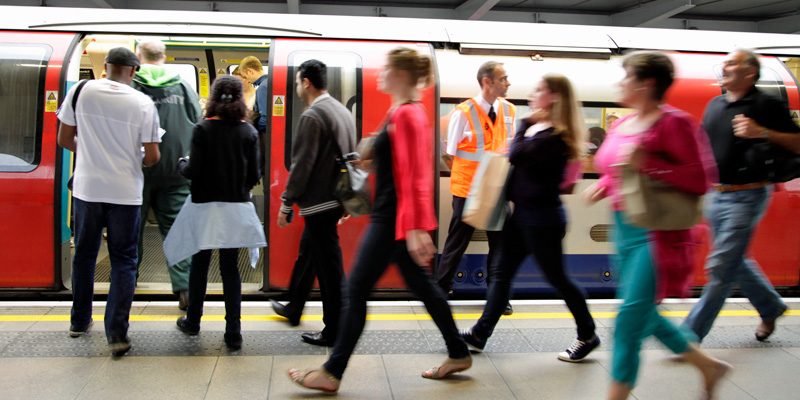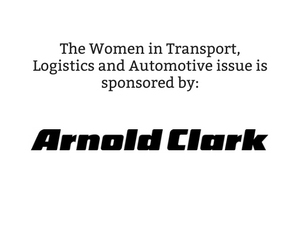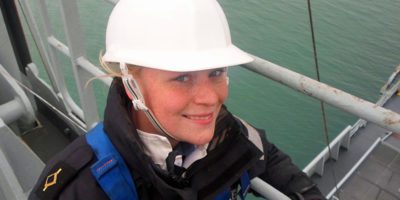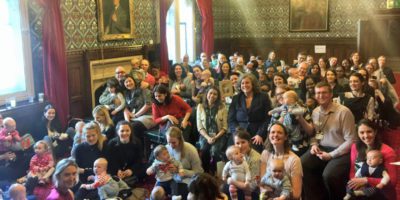Lauren Sager Weinstein is chief data officer at Transport for London (TfL), where she is responsible for driving decision-making and improved customer services through provision of data products and services. Lauren oversees TfL’s business intelligence / data science strategy, TfL’s data technical platform development, as well as support for data products and services. Lauren has worked for TfL in various roles since 2002 and before this she was employed by the City of Los Angeles and the RAND Corporation, a non-profit institution that helps improve policy and decision making through research and analysis.
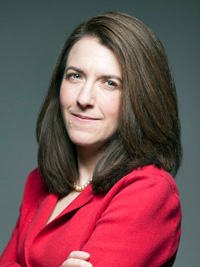
“…I have had a series of bosses and senior colleagues who have mentored me over the years (and who still do). These remarkable women and men have offered me advice, challenge, and guidance as I have progressed…”
Transport – the connective tissue that allows cities to flourish
I’ve always been struck by how transport is the connective tissue that allows cities to flourish. Back when I was in university, I took a course on the growth and development of cities, and a book that influenced me greatly was Kenneth T. Jackson’s Crabgrass Frontier: The Suburbanisation of the United States. It’s fascinating how much transport networks strongly influence the layout, density, and economic livelihood of cities.

Most of my career has been focused on working to make cities better. I started in Los Angeles, working for a city council member as a field and planning deputy, helping to solve Angelenos’ problems, and reviewing planning proposals for new developments.
I’ve now been working at TfL for fifteen years and have had the opportunity to work on some fantastic projects. These include providing analysis of transport during the London 2012 Olympic and Paralympic Games and the launch of contactless payments on the transport network. I’ve always been fascinated by how cities grow and change. London is big and complex, and we use data to plan transport and help people get from A to B.
I love what I am working on – gathering the massive amount of data from systems such as our ticketing network and our train and bus location systems. We take this data, depersonalise it, and transform it back into better-designed routes and into tailored information that we provide to customers.
Using technology to better understand how London works
As chief data officer, I lead a brilliant team – made up of software developers, data scientists, and data managers – who understand the potential for data to be made useful so it can improve Londoners’ daily lives.
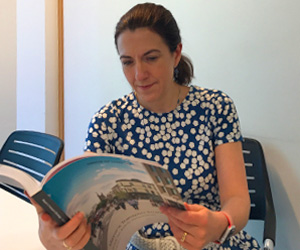
Data: The new oil?
Data, especially good data, is extremely valuable. We collect a vast range and amount of data every day through our ticketing system and through our vehicle information systems. For example, each day we see 19 million smartcard ticketing transactions, 4.5 million events in our bus location systems, and 5.2 billion records from our SCOOT traffic detectors. We are data rich!
However, just holding lots of data isn’t enough. To get value from it we have to turn it into useful information for our customers and into tools to plan and run our services. The challenge is how to do this, and not get lost in all this data. I have very strong views on how to approach this: start with your question and objective, don’t start with the data that you have.
Too often, if people start with the data itself, they risk getting lost in the weeds. My role as chief data officer is to make sure that we get the most out of our data, by focusing on TfL’s key questions and challenges, and then thinking about how data can be analysed to create solutions.
Using passenger data to improve experiences of using the transport network
There is such great potential here – using data science techniques to develop faster and more accurate ways of understanding journey patterns and then using these to run our network. For many years we at TfL have worked to understand where people were travelling so that we could match our services to customers’ needs, but technology at the time was a very limiting factor. We asked our customers in questionnaires where there travelled, but it’s time consuming for customers and expensive for us to run surveys.
One historic example of how we used data before we had the power of technology was back in 1939. Staff manually collected the paper tickets of customers travelling across our network. They collected four million tickets in three days which then took six months to read and sort the journeys by hand. Today, through Oyster and contactless data, we can sort 4 million bus journeys in 0.4 seconds! A statistic that is staggering to think about.
Our powerful computers running our data tools convert journeys into depersonalised patterns that we overlay with bus location data, bus stop data and other data feeds, and we can then build a comprehensive picture of movement patterns on our network.
We are exploring how we might turn this in to more real-time services for our customers, as we know many of our customers would like even greater timely information about our network, and how we might use this data for real-time operational decisions to improve our customers’ journeys.
Current projects
There’s so many things to take about here! We recently published the results of our four-week pilot of collecting depersonalised WiFi connection data from customers’ mobile devices that in the future could be used to better understand how people navigate the London Underground network.

The insights this pilot revealed into how people criss-cross London using the Tube, and the potential benefits this depersonalised data could unlock, from providing better customer data to helping address overcrowding, are enormous. We are now working closely with key stakeholders to examine our next steps while ensuring we respect our customers’ privacy and keep them informed as we progress this work.
Importance of safeguarding consumer data
As a public body, in effect, we have a license to operate from the public, and therefore the public’s trust in us is fundamental. And trust is the biggest badge of honour for any data scientist. If people trust you with their data, you can get a greater insight and therefore give more back to your customers.
When it comes to personal customer data, we are extremely vocal about the fact that we will not share it with any third parties without customers being fully aware. We take our privacy obligations extremely seriously, not just because of legal and policy requirements, but because it is the right thing to do. It also makes good business sense.
We also try to engage proactively with the Information Commissioner’s Office, privacy groups and key customer stakeholders to ensure they understand our approach and also help ensure we continue to learn and adapt to keep our customer data safe.
Best career advice I’ve received
One of the best career advice I’ve received is to take advantage of mentoring and networks. I have had a series of bosses and senior colleagues who have mentored me over the years (and who still do). These remarkable women and men have offered me advice, challenge, and guidance as I have progressed. And networks can be a valuable resource to build connections and develop new perspectives.
Since 2005, I’ve been involved with our professional network created to help women progress in the transport industry. Our organisation, newly re-branded to be called Women in Transport (http://www.womenintransport.com/), is made up of women and men working to help address the fact that women are underrepresented in the transport sector.
We have a great programme of events, ranging from personal development sessions to larger networking evenings. It’s been professionally rewarding to contribute to helping women advance, and personally valuable in terms of the great people I’ve gotten to know.
Exciting times
It’s an exciting time for TfL at the moment. The city is continuing to grow and as it does so there are many more challenges around how you can keep the city moving while also looking at how we encourage more greener travel options like walking and cycling.
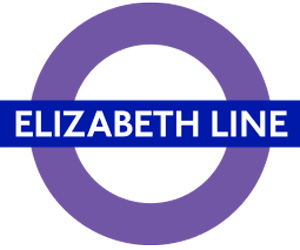
https://tfl.gov.uk/corporate/careers/
https://www.womenintransport.com/
https://twitter.com/transportwm
https://www.linkedin.com/company/11273622/
Elizabeth Line roundel image credit: By Transport for London (Vectorised from [1] and [2]) [Public domain], via Wikimedia Commons

